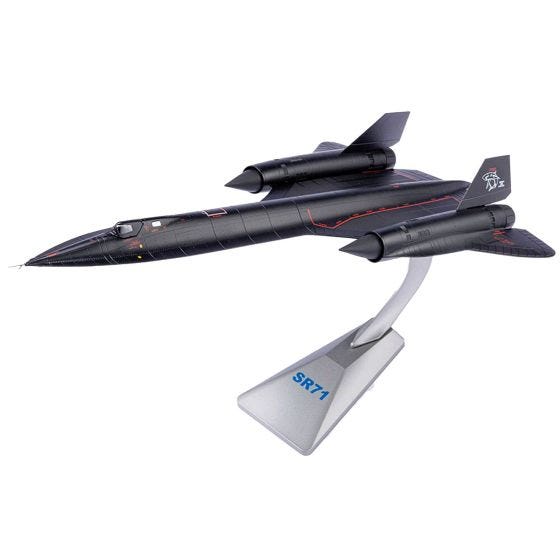SR-71 Blackbird USAF Die-Cast Model

Backordered:
Expected 2026-01-09
Backordered
Features:
• Authentic paint scheme, engraved panel lines, and pad printed decals across the surface
• Faithfully replicated surface lines, grilles, and engine details
• Optional retracted or deployed landing gear
• Cast metal display stand • Measures 17.75”l with a 9.25" wingspan at 1:72 scale
• Limited-edition
History and Specifications: Produced between 1964 and 1968 with 32 examples manufactured, the aircraft measured 107ft long with a 56ft wingspan. Fitted with two Pratt & Whitney J58 afterburning-turbojet engines, the aircraft surpassed Mach 3.4 within just months of introduction. Reaching more than 85,000 ft, each body panel was subject to more than 1000°F at top speed, necessitating the use of titanium alloy across the airframe. Further dissipating the heat, engineer Ben Rich spent much time on the challenge, before realizing than an all-black paint scheme could solve their issues. Receiving the name “Blackbird” for its iconic look, the SR-71 was also pioneer in stealthy design, appearing just larger than a bird. Integrating radar-absorbing paint with angular surfaces, more than 90% of the massive aircraft would be invisible from early-warning stations. Retiring from service during the 1990s, with more than 3,551 missions, 17,000 sorties, and 53,400 flight hours, no SR-71 was ever taken down by enemy fire.

